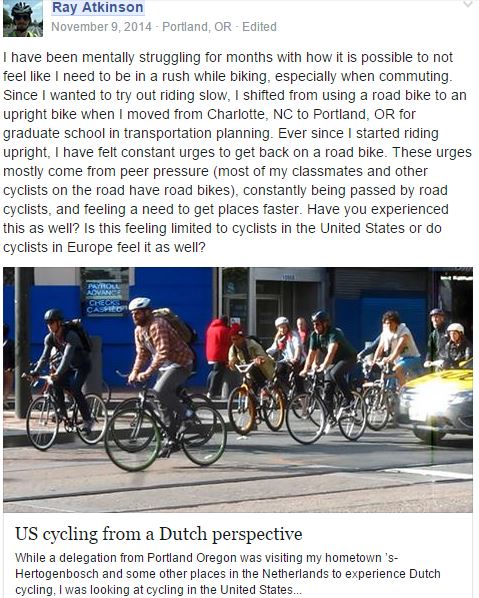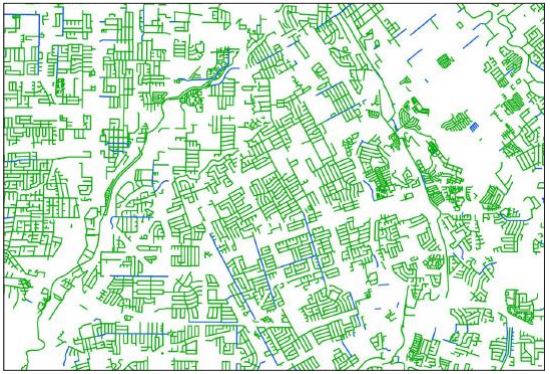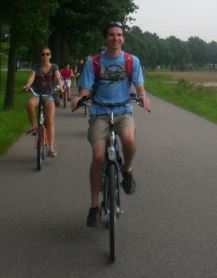My final pre-departure blog post assignment is to watch and respond to a video about Dutch bike infrastructure. I chose to watch the following video, which is titled “Cycling in the US from a Dutch perspective.” A blog post was also written about the video.
I have watched this video and read the blog post several times before. I posted the following to “The Slow Bicycle Movement” facebook group on November 9, 2014 after biking in Portland, OR for less than two months because I was feeling peer pressure to bike faster. Even though I ended up getting a road bike so I could go faster, I am still constantly passed by cyclists in Portland.
While many of my urban planning classmates don’t understand the significance of slowing down when biking, I am an advocate for slowing down when biking. A major reason why I want cyclists in the United States to slow down is because I understand how slow cyclists in Denmark and the Netherlands go. Due to how slow people bike in Denmark and the Netherlands, “interested but concerned” cyclists are seen biking everywhere. This isn’t the case in the United States. “Interested but concerned” cyclists in the United States will not feel attracted to biking if they see cyclists biking at full speed. “Interested but concerned” cyclists can’t keep up with a strong and fit cyclist who has been biking for years. I find it ironic how many of the strong and fit cyclists want more cyclists to be on the road with them but they aren’t biking at the speed that “interested but concerned” cyclists can keep up. Until cyclists in the United States bike at a relaxed pace, a majority of “interested but concerned” cyclists will not bike.






